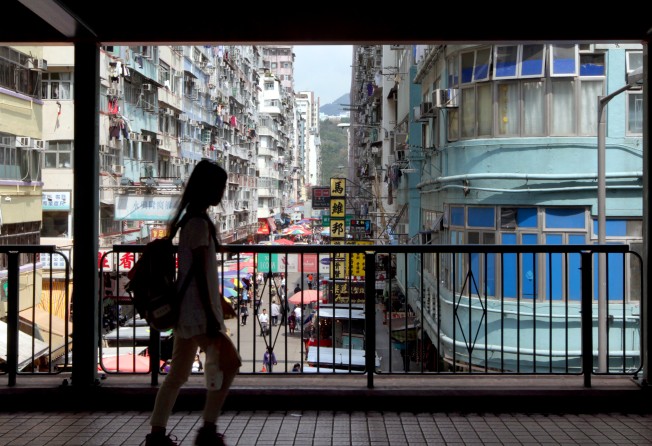Ministry of silly walks: Hong Kong officials are shirking their responsibility to make crowded Mong Kok a better place for pedestrians
Paul Zimmerman says the upcoming sale of a government building in Mong Kok is a valuable chance to improve walkability in the area – if only officials would see sense

I like the Ombudsman’s recent public announcements that tai chi is healthy, but not in public administration. Tai chi, in local slang, means to shirk responsibility. The Ombudsman, Connie Lau Yin-hing, is already so busy clearing obvious cases of maladministration that I wonder whether she will have time for the well-practised, evasive language bureaucrats dish out when they reply to proposals and questions.
In our campaign to improve walkability, our latest encounter with tai chi is over the sale of the Trade and Industry Department Tower, formerly known as Argyle Centre Tower II, on Nathan Road in Mong Kok. It is a 1980s building owned by the government. The tender for its sale closes on January 8. We have asked for it to include terms which oblige the buyer to internalise the links to Mong Kok MTR station and the Mong Kok Road footbridge. These stairs and escalators currently obstruct pavements and roads surrounding the building.
Removing these structures from the adjacent pavements and roads would improve pedestrian and vehicular circulation at street level. Moreover, linking the footbridge with a new Argyle Street footbridge via the Argyle Centre Towers is a critical piece of the puzzle the government has been struggling with: the creation of a comprehensive elevated pedestrian network desperately needed to alleviate the overcrowding of Mong Kok’s streets.
The sale of the building is a one-off opportunity to improve walkability. If we fail to spell out these requirements in the tender, it will be hard to convince the buyer to give up gross floor area later to invest in the works.
The Government Property Agency’s first move to shirk responsibility was outrageous. It said : “Having consulted the Transport Department, we note that it would cause inconvenience to the pedestrians. It would require pedestrians to pass through the internal area of the building before reaching the footbridge and Nathan Road. The route, which will not be open at all times, will be indirect and is not desirable from the perspectives of property management and cost-effectiveness.”
We pointed out that there are many buildings in Hong Kong where this happens all the time, including 100 Queen’s Road Central and the Central-Mid-Levels escalator.

This is not the first time we have encountered a misplaced focus on expediency over walkability.
When it became clear in 2009 that the Tamar footbridge would stop 10cm short of Admiralty Centre, we wrote to the government and pointed out the importance of a direct link into the elevated system of Queensway Plaza, Pacific Place and the connected buildings. Officials replied that it would require too much time to negotiate with the owners of Admiralty Centre. So instead, we now all have to go down to street level and back up again to continue on our way.
The government’s third tai chi move talked of how they would “encourage the successful bidder to consider ways of enhancing the connection between the TID Tower and the existing footbridge system and adjoining commercial buildings to improve the surrounding environment”.
Which department will be responsible for such “encouraging” once the building has been sold? Would this include links to the MTR? Who would pay for the removal of the structures on the pavements and road? The questions go on.
All this would be so much easier to resolve before selling the building. Instead, we will have to wait and see whether this encouragement is real or simply a wimpy tai chi move, another one for the Ombudsman’s tray.
Paul Zimmerman is a Pok Fu Lam district councillor and CEO of Designing Hong Kong